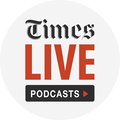
Reserve Bank has policy space to cut interest rates, official says
Loading player...
The decline in inflation has created the policy space for the Reserve Bank to cut interest rates, a senior Bank official said on Monday.
The Bank has cut the repo rate by 300 basis points to 3.5% so far in 2020. This was as inflation dropped and then rose again to 3.2% in July, still near the lower end of the Bank’s 3%-6% inflation target range.
“Monetary policy has the room to move, which is not normal for us. The rate trajectory, given what we can see now, will be a pretty moderate one,” the Reserve Bank’s head of economic research, Chris Leowald, said during a panel discussion on the prospects of a post-Covid economic recovery at the SA Institute of Tax Professional’s annual tax indaba.
Rises in wages and oil and fuel prices are expected to be gradual, Leowald said.The fact that the depreciation of the rand had not had inflationary effects had also assisted.
Leowald said long-term rates remain high, meaning that while it was cheap to borrow for short-term investments it was not so cheap for long-term investments, which were critical for infrastructure drives and big investment projects.
What was needed, he said, was to see a carry through from the short-term rate into the long-term rate. This would probably come but it would take time.
“If expectations of future growth rise, you will start to see that long-term yields start to come down and in a self-fulfilling way make those kind of investments more attractive and more possible.”
Leowald was quite positive on a macroeconomic recovery pointing to supportive developments in the global economy. SA’s terms of trade had been very strong, particularly in mining, which would continue as the Chinese economy continued to rev up. The US Federal Reserve’s monetary policy stance was also a positive factor.
“The global environment for SA is actually quite supportive and positive,” Leowald said.
“This puts us in a better position domestically as it means on the fiscal side you can borrow more for longer. It means that monetary policy isn’t under stress because the pass throughs from currency depreciation won’t be there as strong as one might have thought they would be.
“The macroeconomic recovery trajectory is actually a pretty good one to be honest and as supportive really as it could be given where we started from.” Though lots of things needed to be done to get ...
The Bank has cut the repo rate by 300 basis points to 3.5% so far in 2020. This was as inflation dropped and then rose again to 3.2% in July, still near the lower end of the Bank’s 3%-6% inflation target range.
“Monetary policy has the room to move, which is not normal for us. The rate trajectory, given what we can see now, will be a pretty moderate one,” the Reserve Bank’s head of economic research, Chris Leowald, said during a panel discussion on the prospects of a post-Covid economic recovery at the SA Institute of Tax Professional’s annual tax indaba.
Rises in wages and oil and fuel prices are expected to be gradual, Leowald said.The fact that the depreciation of the rand had not had inflationary effects had also assisted.
Leowald said long-term rates remain high, meaning that while it was cheap to borrow for short-term investments it was not so cheap for long-term investments, which were critical for infrastructure drives and big investment projects.
What was needed, he said, was to see a carry through from the short-term rate into the long-term rate. This would probably come but it would take time.
“If expectations of future growth rise, you will start to see that long-term yields start to come down and in a self-fulfilling way make those kind of investments more attractive and more possible.”
Leowald was quite positive on a macroeconomic recovery pointing to supportive developments in the global economy. SA’s terms of trade had been very strong, particularly in mining, which would continue as the Chinese economy continued to rev up. The US Federal Reserve’s monetary policy stance was also a positive factor.
“The global environment for SA is actually quite supportive and positive,” Leowald said.
“This puts us in a better position domestically as it means on the fiscal side you can borrow more for longer. It means that monetary policy isn’t under stress because the pass throughs from currency depreciation won’t be there as strong as one might have thought they would be.
“The macroeconomic recovery trajectory is actually a pretty good one to be honest and as supportive really as it could be given where we started from.” Though lots of things needed to be done to get ...

